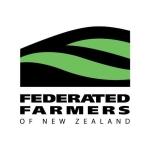Into a brighter future for meat and fibre
Final speech by Bruce Wills as Federated Farmers Meat & Fibre Chairperson at Federated Farmers Meat & Fibre Annual General Meeting at the Distinction Rotorua.
It is with genuine pleasure that as I am about to depart my role with the Meat & Fibre Industry Group.
l can report a sector that is in its most buoyant mood in a very long time.
When I took this role in June 2008, meat and fibre farmers were suffering their poorest profitability for 50 years. An average prime lamb was returning just $58, heads were down and 'convert to dairy' was a catch cry in many areas.
In September 2008, Federated Farmers Meat & Fibre floated an idea called T150. A target price of $150 for a good mid season Iamb within five years.
It remains an aspirational goal to focus the entire industry on a level of profitability necessary to ensure long term growth and prosperity for the entire sheep sector.
T150 caught the imagination of farmers and gave hope to many.
So how have we done?
In April 2010 the average lamb was returning $76 to farmers, but by April 2011 this was up 58 percent to $116.
A dramatic improvement for the better and although the average still has a way to go, many sheep farmers are reaching and exceeding T150 for a number of their lambs.
Meat Sector Strategy
The Meat Sector Strategy is the most important document the sector has seen for decades.
l am hopeful most of you have read it and digested it.
We all know that where the meat and fibre sector has been in recent years has not been a good place to be.
The strategy highlights the 'behavioural changes' we all need to make to ensure a better future for all.
My big hope is that farmers will actively engage with this report.
But how do we do this?
First, read the report and understand the sector's mutual interdependence.
Next build a relationship with parties on the next steps on the value chain and finally, focus on best practice!
I can tell you our current and improved profitability helps this but one season does not make a trend. To those who are extrapolating the gains we are yet to make can I ask you to temper your enthusiasm until we know this is sustained and enduring.
During my time as your chairperson, trying to bring change to our meat industry has been one of my most important tasks.
We've tried a 'Taskforce', an 80% merger proposal, the Ministry of Agriculture and Forestry’s 'Meat the Future', a merger of the cooperatives.
Sadly none have succeeded as of yet.
What I have learnt is that blaming others for our predicament doesn't help.
This is our problem and we need to own it.
Unless we are doing something different as an industry in twelve months to what we were doing two years ago, then we have achieved little.
Current strong prices do not mean 'mission accomplished’. Strong commodity returns and supply shortages are merely offering us some breathing space.
Let's take this opportunity to give some real focus to bringing about the behavioural changes outlined in the strategy report.
Wool is back
This is the other critical part of T150.
This too has shown a remarkable revival.
I am convinced of two things; that wools' time has come and that wool must play its part in our sheep industry's future.
For 120 years we have relied on a dual purpose animal and this is not about to change anytime soon.
There has been plenty of action in this sector. The loss of the wool levy and the coming and going of WPC probably the most significant but it has focused minds and ultimately, that is a positive. It goes back to what I said earlier about owning our future.
I congratulate those farmers that had the courage to go out and support something different.
It was an option farmers didn't have in the past.
The stir that this venture caused has done a lot of good. It clearly demonstrated to the incumbents that a sizeable number of growers were not happy with the way they had been treated in recent years.
It has played some part I am sure in the better prices we are now receiving.
Can I also congratulate the Campaign for Wool that was launched recently and which Federated Farmers has joined. Some are cynical about generic promotion but this is truly something different and it’s something positive because it’s from the farm up.
Much remains to be done
The achievement of T150 will do much more than just allowing meat and fibre farmers a more secure and profitable future.
As confidence grows I look forward to sheep numbers continuing to grow with similar investment in our businesses. I also look forward to younger people entering the sector - attracted by more profit and confidence in the future.
With the average age of a sheep farmer today being 58 years, we could do with more youth!
This sector also needs new thinking. It needs keen, intelligent and motivated people of all ages lining up to become sheep and cattle farmers.
Current better profitability is a great start.
I have tried to do my bit to make a difference. I started at the worst of times and while I’m not departing at the best of times, it is, perhaps, the start of better times to come.
I wish you well for your future endeavours.
It has been a real privilege to represent you.
Thank you.
